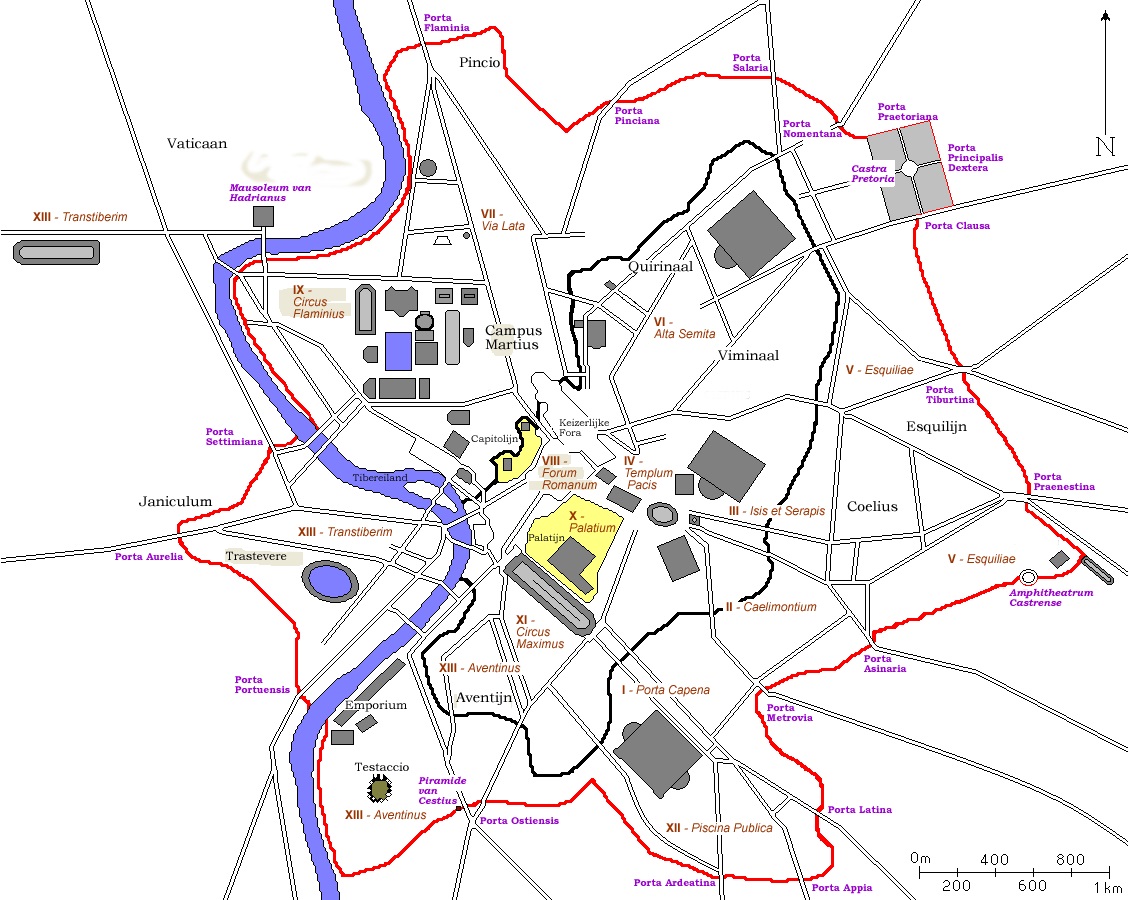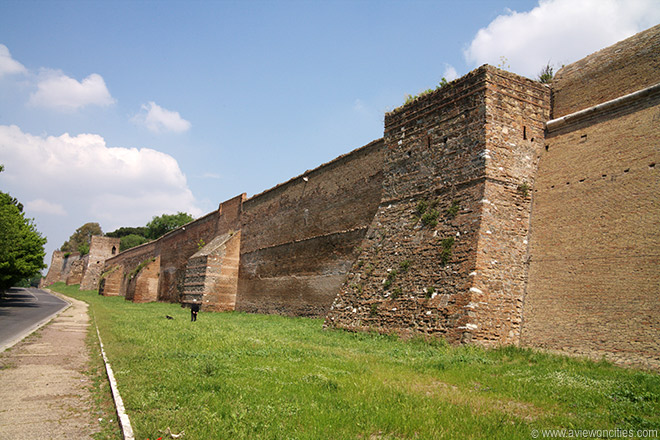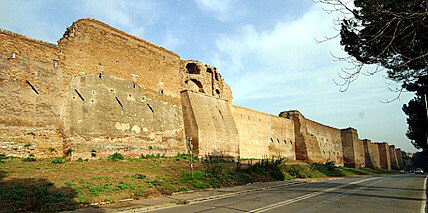Aurelian Walls
The Aurelian Walls is the most important city walls of Rome, started its first phase of construction under the Emperor Aurelian ( 270-275 ) and Emperor Probus ( 276-282 ) was completed. Rome had long since outgrown a wall from an earlier time that was " Servian Wall ", but the city over the old city wall.
Formation
Construction (3rd century )
The construction of the wall represented the political acknowledgment of the emperor that Rome itself, had to reckon with an attack of Germanic tribes, the capital of the empire. In the years 254-259 AD multiple Germanic tribes had already appeared on Italian soil, such as the Alamanni and the Goths. So far Rome had been able to beat back these attacks successfully, before the capital would have been directly threatened; However, it was only a matter of time before it would create German associations to Rome. The final impetus for the construction of the Wall was the crushing defeat of Aurelian against the Juthungen in January 271 at the Battle of Placentia.
The wall was 19 km long, originally 6 m high and 3.5 m deep. The biggest part was built of bricks. There were 18 major goals and 383 watchtowers, each at a distance of about 30 m. The architects based many existing buildings in the brackets with a, which is a clear sign of the haste of the work. For example, the famous Tomb of Gaius Cestius, the Pyramid of Cestius, the Amphitheater Castrense, the Castra Praetoria and parts of the Aqua Claudia were part of the wall.
Expansion (4th - 5th century)
However, the city wall presented an effective barrier is only against those attackers who lacked the technical and other requirements for a prolonged wave of attack or even a siege. Already emperor Maxentius left the wall at the beginning of the 4th century AD slightly increase. Later, the Emperor Honorius left ( 395-423 ) and Arcadius ( 395-408 ) raise the walls to almost 11 m and reinforcing. Now is also the mausoleum of the Emperor Hadrian, the Castel Sant'Angelo later integrated as Citadel into the mounts. In many cases, the gates were expanded to protect turrets. Repair and strengthening measures prompted Emperor Valentinian III. (Nov. 5) and the Byzantine general Belisarius.
Effect
By integrating into the wall the old graves were obtained important and therefore remained even after the triumph of Christianity as part of the defense of Rome. The problem of the Aurelian Wall was its scope: Rome had basically never enough soldiers to man the entire 19 km of the wall. Nevertheless, provided the Aurelian Walls an effective shield against unorganized attacker dar.
The last major service should the Aurelian Walls, Pope Pius IX. afford, as if to defend himself against the unification of Italy. His request was finally zunichtegemacht on September 20, 1870, when the Bersaglieri at Porta Pia broke through the wall and thus the unification of Italy age. Furthermore the Aurelian Walls lost at this time definitively its function as a protective city wall, because Rome simply grew beyond its boundary.
Today, the city wall is still almost completely intact. Especially towards the end of the 19th century, many parts have been restored to the original state supposedly ancient and medieval or early modern freed from attachments.
List of Goals
- Porta Flaminia - the beginning of the Via Flaminia, now the Porta del Popolo
- Porta Pinciana
- Porta Salaria - the beginning of the Via Salaria
- Porta Pia - the beginning of Via Nomentana
- Porta Nomentana - the beginning of the ancient Via Nomentana
- Porta Praetoriana - Former Access Castrum Praetorium
- Porta Tiburtina - beginning of Via Tiburtina
- Porta Maggiore - the beginning of Via Praenestina and meeting the three aqueducts
- Porta Asinaria - Beginning of the former Via Asinaria
- Porta Metronia
- Porta Latina - beginning of Via Latina
- Porta Appia - the beginning of the Via Appia ( Appian Way ), now Porta San Sebastiano
- Porta Ardeatina
- Porta Ostiensis - next to the Pyramid of Cestius, leading to the Basilica di San Paolo fuori le Mura, where the Via Ostiense begins today Porta San Paolo
- Porta Portuensis
- Porta Aurelia Pancraziana
- Porta Septimiana






